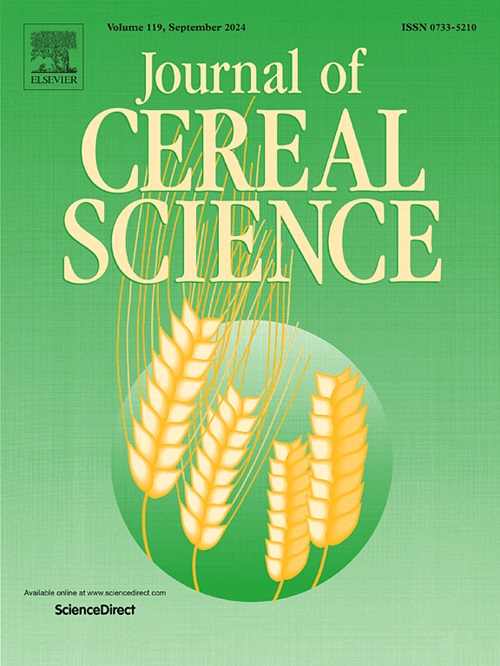熟米丸形成:体外质构评价方法的发展与优化
IF 3.7
2区 农林科学
Q2 FOOD SCIENCE & TECHNOLOGY
引用次数: 0
摘要
水稻离体质构定量一直是质量评价的难点。咀嚼的中间阶段对于检测煮熟的米饭的质地变化至关重要。在本研究中,以体内评价为对照,建立了一种体外多重挤压系统来量化不同水稻品种的质地形成。探讨了体外咀嚼周期和条件与熟米性质的关系。较高的咀嚼循环次数可提高咀嚼效率、颗粒数、固体漏出量和碘蓝值,同时减少残余功和黏附性。升高的唾液和酶水平显著增加,减少糖的释放,同时降低硬度和初始和残余功。体外最佳条件为唾液量(0.6 g/g)、咀嚼次数(10次)和酶活性(5 U/mL)。体外咀嚼丸在总颗粒数(99%)、含水量(95%)、还原糖含量(96%)和微观结构上与口腔咀嚼丸相似。因此,体外口腔模拟可以量化大米的质地并促进有效的质量评价。本文章由计算机程序翻译,如有差异,请以英文原文为准。
Bolus formation of cooked rice: Methodology development and optimization of in vitro texture evaluation
Quantifying rice texture in vitro persists as a challenge in quality assessment. The middle chewing phase is critical for detecting textural variations in cooked rice. In this study, an in vitro multiple extrusion system was developed to quantify texture formation in diverse rice varieties, using in vivo evaluation as the control. Correlations between the properties of cooked rice and in vitro chewing cycles and conditions were explored. A higher number of chewing cycles enhanced bolus chewing efficiency, particle count, solid leakage, and iodine blue value while reducing residual work and adhesiveness. Elevated saliva and enzyme levels significantly increased, reducing sugar release, while decreasing hardness and initial and residual work. The optimal in vitro conditions were saliva amount (0.6 g/g), chewing cycles (10), and enzyme activity (5 U/mL). The in vitro–chewed bolus was similar to orally chewed rice bolus in terms of total particle number (99 %), water content (95 %), reducing-sugar content (96 %), and microstructure. Thus, in vitro oral simulation enables quantification of rice texture and facilitates efficient quality evaluation.
求助全文
通过发布文献求助,成功后即可免费获取论文全文。
去求助
来源期刊

Journal of Cereal Science
工程技术-食品科技
CiteScore
7.80
自引率
2.60%
发文量
163
审稿时长
38 days
期刊介绍:
The Journal of Cereal Science was established in 1983 to provide an International forum for the publication of original research papers of high standing covering all aspects of cereal science related to the functional and nutritional quality of cereal grains (true cereals - members of the Poaceae family and starchy pseudocereals - members of the Amaranthaceae, Chenopodiaceae and Polygonaceae families) and their products, in relation to the cereals used. The journal also publishes concise and critical review articles appraising the status and future directions of specific areas of cereal science and short communications that present news of important advances in research. The journal aims at topicality and at providing comprehensive coverage of progress in the field.
 求助内容:
求助内容: 应助结果提醒方式:
应助结果提醒方式:


